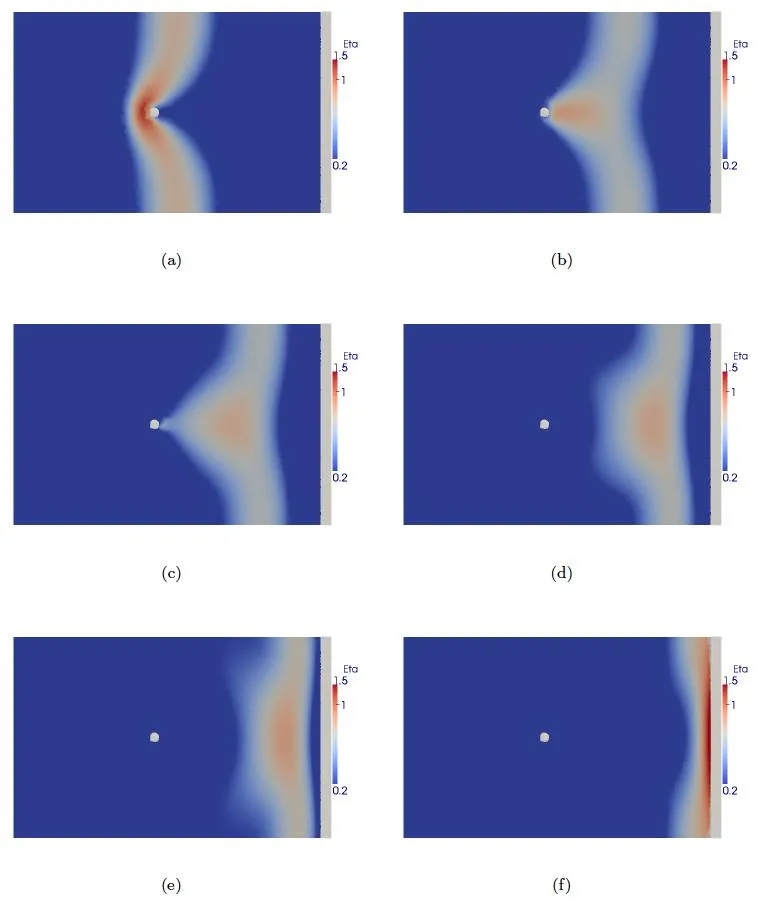Small Islands May Make Tsunami Danger Worse
While offshore islands usually protect coasts, simulations suggest they may amplify monster waves reaching the mainland
/https://tf-cmsv2-smithsonianmag-media.s3.amazonaws.com/filer/f4/6b/f46bbdf8-5b69-4740-8c5c-33645ea6a4c1/42-31838870.jpg)
Sometimes your best protector can become your worst enemy. Coastal scientists have long known that small islands sitting just off the coast can safeguard mainland communities from the worst effects of winds and waves. But simulations show that those protective effects dissipate in the face of tsunamis, and that islands may actually amplify the massive waves as they travel toward the coastline.
Tsunamis have plagued coastal areas throughout human history, but the last decade has seen two particularly devastating events. On December 26, 2004, a magnitude-9.1 earthquake off the coast of Sumatra, Indonesia spawned a tsunami with waves as high as 80 feet, killing at least 280,000 people throughout the Indian Ocean region. Then on March 11, 2011, a magnitude-9 quake off the coast of Japan created a tsunami that killed 18,000 people and caused the Fukushima nuclear disaster.
Despite heightened awareness of tsunami dangers, the only effective countermeasure remains preparedness, which requires accurate warning systems. One key piece of information needed to estimate a tsunami’s potential impact is runup—the maximum elevation that the water will reach on land. Studies have typically assumed that runup is uniform along any particular coast, but observations from real tsunami events have indicated that it may be more complicated. For example, researchers reported in 2012 that a tsunami spawned by a magnitude-7.7 earthquake off Sumatra in October 2010—which killed 400 people—appeared to have had higher than expected runups behind small islands.

The unusually high runups could have been influenced by other factors, such as the shape of the seafloor off the coast. So Themistoklis Stefanakis of University College Dublin in Ireland and his colleagues created numerical simulations of a flat seafloor sitting in front of a simple beach, with a small, conical-shaped island off shore. The team then bombarded the fake seashore with pretend tsunamis. The results of their research appear today in the Proceedings of the Royal Society A.
The island offered no protection in all 200 simulations the researchers ran for the study. Instead, as the tsunami traveled toward the coast, the swell of water wrapped around the tiny piece of land, piling up behind it before moving on to shore. At the beach just behind the island, the tsunami was up to 70 percent higher than in areas where there was no island.
“This finding shows that small islands in the vicinity of the mainland act as amplifiers of long waves at the region directly behind them and not as natural barriers as it was commonly believed,” the researchers write.
Real coastlines are rarely as simple as those in the simulation. Chains of islands may even offer the expected protection, as was seen during the 2010 Indian Ocean tsunami. But the research suggests that the tsunami models used to predict the impact of these events could be wrong, especially when they eliminate offshore islands in an effort to simplify calculations, Stefanakis and his colleagues note. And one day, they add, calculations such as the ones in their study could provide real-time estimates of maximum inundation from an approaching tsunami, providing people living on coasts better warning of who needs to flee to higher ground.
/https://tf-cmsv2-smithsonianmag-media.s3.amazonaws.com/accounts/headshot/Sarah-Zielinski-240.jpg)
/https://tf-cmsv2-smithsonianmag-media.s3.amazonaws.com/accounts/headshot/Sarah-Zielinski-240.jpg)